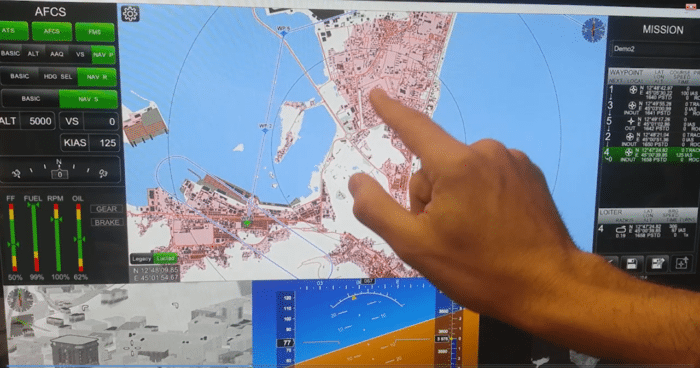
Photo: Wind River.
A new avionics development platform could bring multi-touch capabilities to aircraft cockpit display screens. The platform, jointly developed by Wind River, CoreAVI and Presagis, brings the utility of an iOS or Android smartphone or tablets to safety critical avionics screens.
The three companies displayed the new platform at the recent Aviation Electronics Europe conference. Under the partnership, Wind River is providing its real-time operating system, VxWorks 653, to control the execution of applications. Presagis’ VAPS XT design tool generates graphical display applications, and CoreAVI provides a graphics driver library that processes OpenGL safety critical commands to be displayed on a touch-screen interface.
The combined tool features commercial-off-the-shelf (COTS) certification evidence from Wind River and CoreAVI, and a powerful application development solution for user interfaces that generates code automatically to implement the design created in the editor and to get it deployed and certified much more quickly, said Chip Downing, senior business development director for aerospace and defense at Wind River.
“The generated application interfaces to CoreAVI’s driver and to VxWorks or VxWorks 653. The result is applications that are superior to those coded by hand, are more easily created and updated, and which can be deployed on any platform,” he said. “The power of VAPS XT is that it allows focus on model design rather than the writing of source code, shortening development cycles, and reducing software development costs. Presagis provides a certification kit for the tool, which when combined with the COTS certification evidence from CoreAVI and Wind River, reduces program risk significantly, and the time-to-market for certified products is compressed.”
According to Downing, when digital displays first became available for this type of development work, coding was done by hand typically without the use of either graphical display tools or COTS components. Now, technologies with RTCA DO-178C DAL A software certification evidence can quickly create a ready-for-certification graphics solution stack that accelerates time-to-market and certification approval. COTS products achieve this reduction in cost by allowing reuse of software multiple times and by abstracting the design process to a higher level, he said.
The primary types of companies that could benefit from this type of tool are those creating avionics at the first- and second-tier supplier level to airframe original equipment manufacturers (OEM) such as Airbus, Boeing, Bombardier, Embraer and Lockheed Martin, among others.
One of the newest features of the development tool is Presagis’ embeddable multi-touch capability, where streams of data from multiple touch points are interpreted as gestures, commonly used on today’s smart phones and tablets, that could one day become a feature in aircraft cockpits.
“Multiple aircraft OEMs are currently evaluating the use of gestures in cockpits, and studying the human factors around their use, and intend to introduce them into their cockpits over the next few years,” said Downing.
The SAE International engineering standards development organization has also recently formed an industry committee to advise the FAA and other authorities on the safe use of multi-touch displays. Military applications are more advanced in this area than civil applications and may eventually deploy this technology in a shorter timeframe, he said.
There could also be applicability for the new tool within the development of user interface software for unmanned aircraft systems ground control stations. Downing said that CoreAVI, Presagis and Wind River have already demonstrated the use of their integrated system as a UAS ground station.
“Most sophisticated mission control systems in the past were not certified at high levels even though the impact of their missions could be devastating. This is now changing as the use of UAV platforms in civil airspace by police and homeland security departments means that certification is required in many cases,” said Downing.